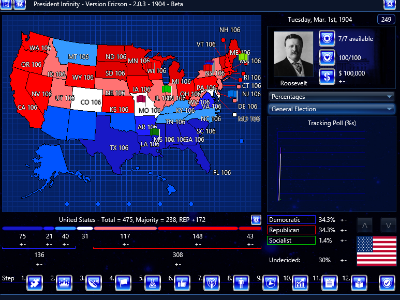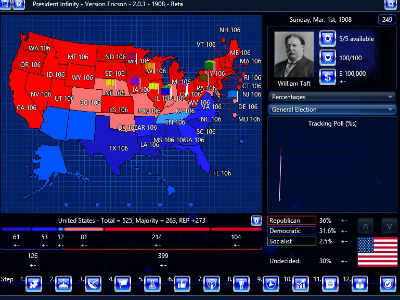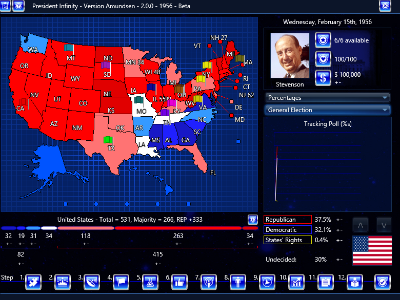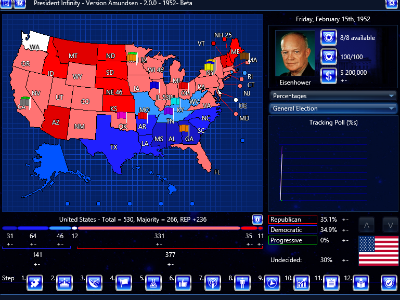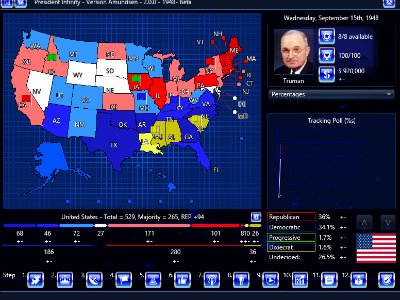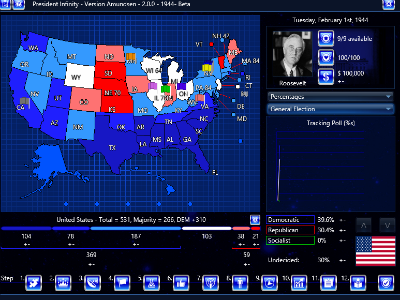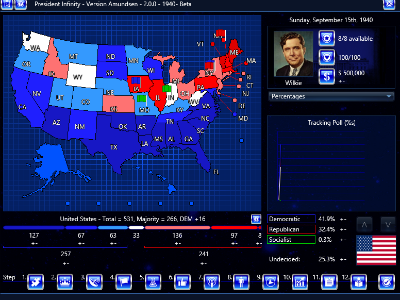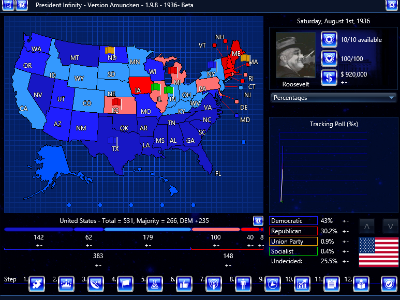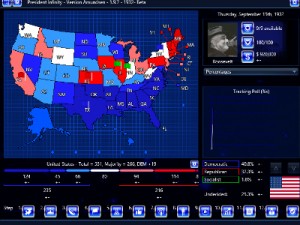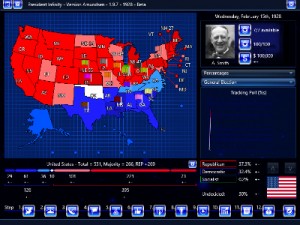*This scenario was greatly updated by the Historical Scenario Commission on August 28, 2017. It can be downloaded here: United States – 1904 v. 2.0
Theodore Roosevelt has finished most of slain president William McKinley’s term. And now he hopes to win election in his own right. Roosevelt’s presidency has been both peaceful and active. However, not everyone is happy. Democrats claim he is using too much executive power. While in his own party, conservative Republicans feel he is becoming too Progressive. A Drop Roosevelt movement was launched by conservatives under Roosevelt’s former campaign manager Mark Hanna, but Hanna died early in the election season. Now, Roosevelt runs unopposed and seems unstoppable. This election takes place in the Progressive Age.
As mentioned above, Roosevelt run unopposed.
For Democrats, two-time nominee and leader of the pro-labor wing of the party, William Jennings Bryan has decided not to run again. For pro-business (Bourbon Democrats), former president Grover Cleveland has ignored calls to run for the presidency again. Not a single major politician among the Democrats has decided to take on President Roosevelt. This leaves the field wide open. By default, the labor-wing rallies behind the wealthy publisher William Randolph Hughes. Bourbon Democrats flock to the front runner New York judge Alton B. Parker. Several other figures seek to become alternatives to these two men.
The Socialist Party is the 3rd party in this election with Eugene Debs as the nominee.
This scenario allows for several what-ifs:
- What if former Democratic nominee William Jennings Bryan ran for a 3rd time?
- What if former president Grover Cleveland went for a 3rd non-consecutive term in office?
- What if the former commanding general of the United States, Nelson A. Miles, listened to the calls to run for the presidency?
- What if Mark Hanna had not suddenly died and stood as the conservative option for Republicans?
- Former Hanna backers urged Charles Fairbanks to run. What if he had?
- Governor-general of the Philippines, William Howard Taft, was pushed by moderates to take on his friend, Theodore Roosevelt. What if he had?
- What if Robert La Follette had led Progressive Republicans in 1904?
Feedback to improve the scenario is desired.

